Some of your most-used walking or hiking shoes/boots may end up being lightweight, low-cut trail shoes. That makes these Danner Trail 2650 shoes worth a second look.
by Leon Pantenburg
Disclaimer: I bought these shoes to wear and review. Danner is not a Survivalcommonsense sponsor, and nobody from Danner or any other company had any input in this review. These are my opinions, and all I ever promise in any review is a fair shake.
My most-worn hikers are generally a low cut trail shoe. These are what I wear mainly in urban settings, because of the light weight, coolness and the easy on and off.
I walk a couple miles every night in a nearby park. For me, this is a time for exercise and relaxation. I can think well while walking. My gear usually includes a pen and notebook to jot down thoughts, ideas for stories or musings. I also have a 12-year old black Lab as an office supervisor. She makes sure I don’t spend too much time behind the computer screen, and she insists we walk right about dusk.
These nightly walks allow me to break in shoes quickly, and I may wear anything from flip-flops to heavily insulated hunting boots, depending on the weather. Most of the time, though, I’ll wear a pair of trail shoes. That is one reason I was interested in the Danner Trail 2650. I’m a long-time Danner user, and have always had good luck with Danner products. The Trail 2650 gets it name from the 2,650 miles of the Pacific Crest Trail.
Trails like the Appalachian and PCT are – in most places – generally well-worn paths that don’t challenge footwear all that much. (For 20 years I lived within striking distance of the PCT in Oregon. I hiked on it a lot. When I lived in Virginia, my home was not far from the AT. I did some hiking on it.) For most of the distance on both trails, a heavy boot with aggressive tread is not needed. In fact, a heavy boot can be tremendous overkill which only adds additional weight to your feet. Over a long hike, that extra pound or so on each foot adds up, and you will tire more rapidly.
Flashback: I learned to appreciate trails shoes in Yellowstone National Park in August, 1977. I was hiking the Thorofare Creek/South Loop and was wearing a pair of full-grain leather hiking boots. But I had a pair of Adidas running shoes along as a backup, and to wear while crossing the many creeks on the trail. I ended up hiking much of the trail in soggy Adidas with no socks. A pair of lightweight trail shoes, in addition to your sturdy boots is a good idea, especially on an extended trek.

Naga, my office supervisor and workout partner.
Built to move quickly and confidently through rough terrain, Danner claims, the Trail 2650 can easily fill the role of a lightweight hiker or trainer. Using a Trailguard TPU shank and an EXO Heel System, the Trail 2650 is both lightweight and provides stability on challenging grounds.
Specifications of the Danner Trail 2650
| Style | 61272 |
|---|---|
| Weight | 24 oz per pair |
| Height | 3″ |
| Insulation | Non-Insulated |
| Color | Brown/Red |
| Footbed | EVA |
| Shank | TPU |
| Heel-to-Toe Drop | 8mm |
| Last Type | DT6 |
| Lining | Non-Waterproof |
| Liner | Mesh |
| Outsole | Vibram® 460 |
| Recraftable | No |
| Manufacturing | Imported |
The good stuff
EXO Heel System:
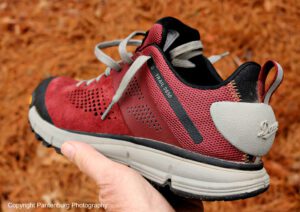
The 2650’s heel counter is on the outside, making it less likely to shift or wear out quickly.
The EXO system grips the heel up around the point of the heel, thus resulting in minimal contact between the heel and the back of the shoe. This is one aspect that makes the Trail 2650 an outstanding trail shoe. My experience is that most blisters develop first on your heel. This is particularly evident when you’re hiking uphill, and the heel tends to slide to the back of the shoe.
The EXO system surrounds the heel with padding in just the right places. I never noticed any rubbing or chaffing in the heel area from day one. Stability is key, according to the Danner website. If your foot isn’t secure, you increase opportunity for slippage and blisters. Preventing that from happening is the job of a heel counter — traditionally a rigid component inside the boot. While this method is effective at locking the heel in place, the Trail 2650 shifts the heel counter to the outside of the shoe. By using a softer material and moving it away from the foot, the EXO Heel System provides a secure fit and increased comfort.
In addition, Danner developed a new last with 8mm of heel drop and a wider forefoot for greater stability.

I wore wool socks and ankle-high Danner Cougars on this climb to South Sister in the Oregon Cascades.
Not waterproof: 2650s are available with moisture barrier liners, but I got the vented, not-waterproof version. I don’t like waterproof hiking shoes. I haven’t found a water resistant liner yet that works as advertised. My experience is that the liners can’t remove moisture as fast as it accumulates during vigorous exercise. This means the shoes retain moisture and prevent it from being released. This whole waterproof liner aspect often overlooked when people are buying shoes or boots, and it can make the difference between hot, soggy feet or comfortable hiking. (Here are five reasons I don’t like waterproof liners in most hiking footwear.)
Mesh liner: There are not enough shoes on the market with a mesh liner. This makes the shoe incredibly non-waterproof. It also means that they will dry out quicker. A shoe that breathes will be cooler. The movement while walking may create some air circulation which helps dry out the interior. (Think jungle boots.) If you anticipate a lot of wading while walking, this is an aspect to consider.
Height: Generally, I favor ankle high trail shoes over low cut. Even on a well-used trail like the PCT, trail debris will inevitably get in the low cut shoes. This come from, I’m guessing, shuffling or kicking stuff into one shoe from the other. If this is a recurrent problem, get some ankle high gaiters to put on when hiking. In some places, specifically the approach to South Sister in the Oregon Cascades, the volcanic scree is heavy, and a shoeful can be expected.
Sole: Danner has come up with a great design on these shoe soles. The Vibram 460 outsole provides excellent traction for most applications, without being too heavy. The outsole has deep, multi-directional lugs that grip in a wide variety of terrain.
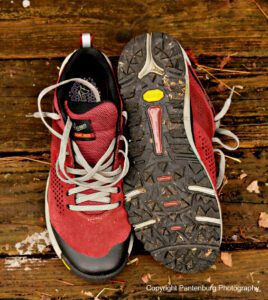
The Vibram 460 outsoles are designed for multi-directional grip. They work very well.
Width variety: I have wide feet, and sometimes it is difficult to find a good-fitting shoe that is wide enough. The 2650 comes in medium or wide. If you will be using your 2650 for extended hikes, you may want to consider a larger, wider shoe. Your feet will expand while hiking, and that shoe that fits well in the store may end up being too tight on the trail.
Insole liners: The footbed is made of open-cell polyurethane for better heat dissipation and air circulation. It is removeable, if you would like to replace it with custom insoles.
Break-in Time: It was very minimal. But that doesn’t mean you should take your new 2650s out of the box and head out for a long hike. (Here are some tips for breaking-in your new hikers.)
Then there’s this:
Low cut shoes are wonderful if there is not debris on the trail or if you only use them in urban settings. My experience is that you probably won’t need much ankle support if you stick to trails. But if you are carrying a heavy pack, and end up picking your way across a boulder field, the ankle support of higher shoes may save you twisting an ankle.
The 2650 does come in a four-inch height, which provided an extra inch of support. But that shoe doesn’t come without a moisture barrier. For my summer ankle-high hikers, I opted for the Danner Fullbore Coyote Hot.
365-DAY WARRANTY: If you suspect your purchase isn’t up to Danner’s standards, or is defective in any way, the company will make things right. Danner offers a 365-day warranty across the entire footwear line.
Do you need a pair of 2650s?
I read all the info and many of the reviews and decided I needed a pair. I wore out two pairs of Merrell Ventilators before getting the 2650s, and could have gone with the proven performers. But what sold me on the 2650s was the lack of moisture barrier, the mesh upper, and the EXO heel system. So far, I have been very pleased with my Danners, and look forward to getting out on the trails more this spring.
Please click here to check out and subscribe to the SurvivalCommonSense.com YouTube channel – thanks!

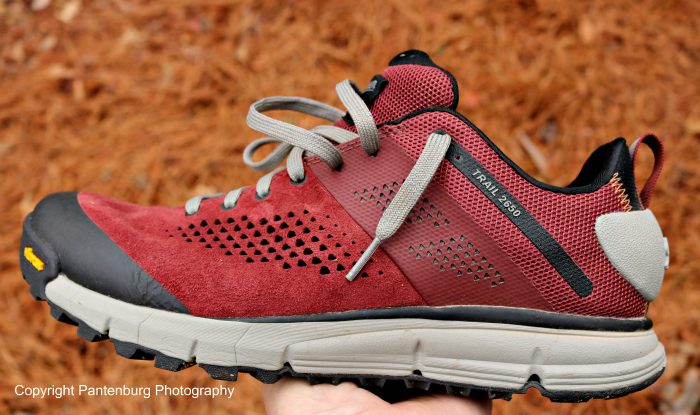

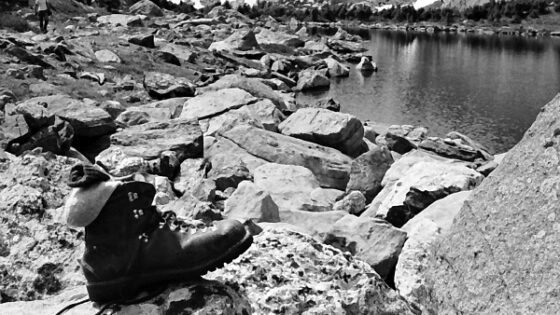
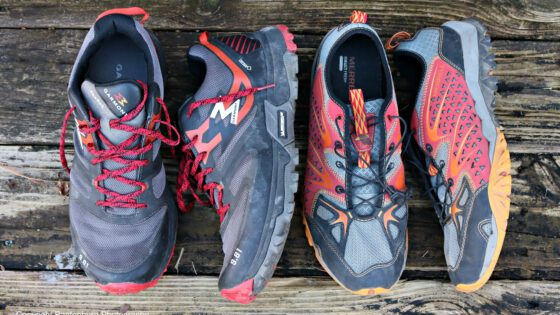
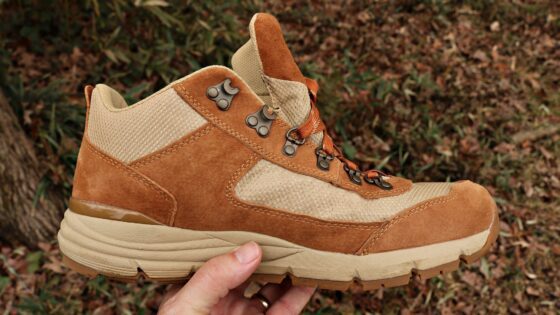
Leave a Reply